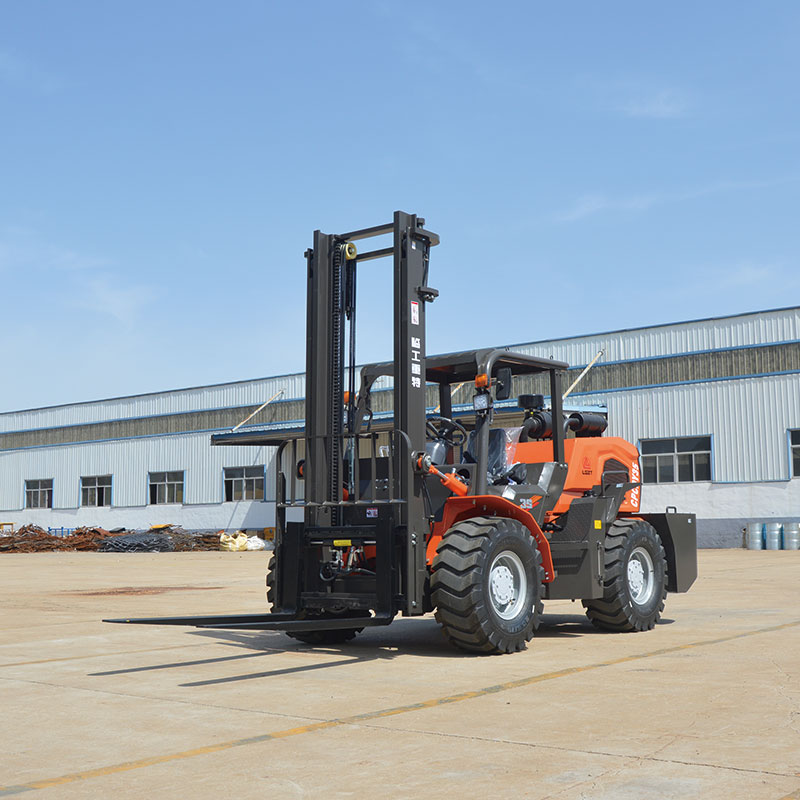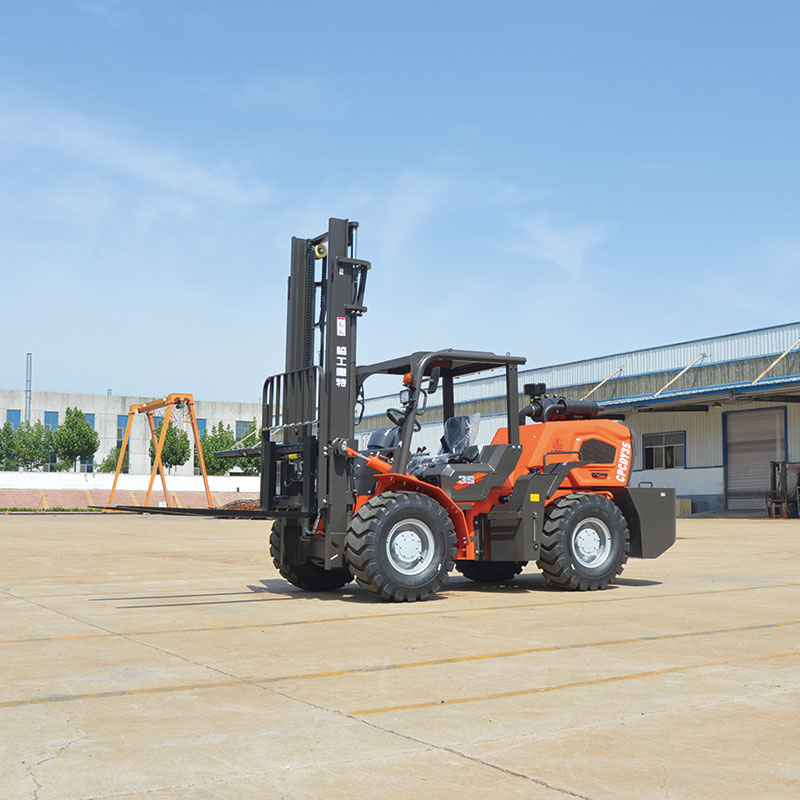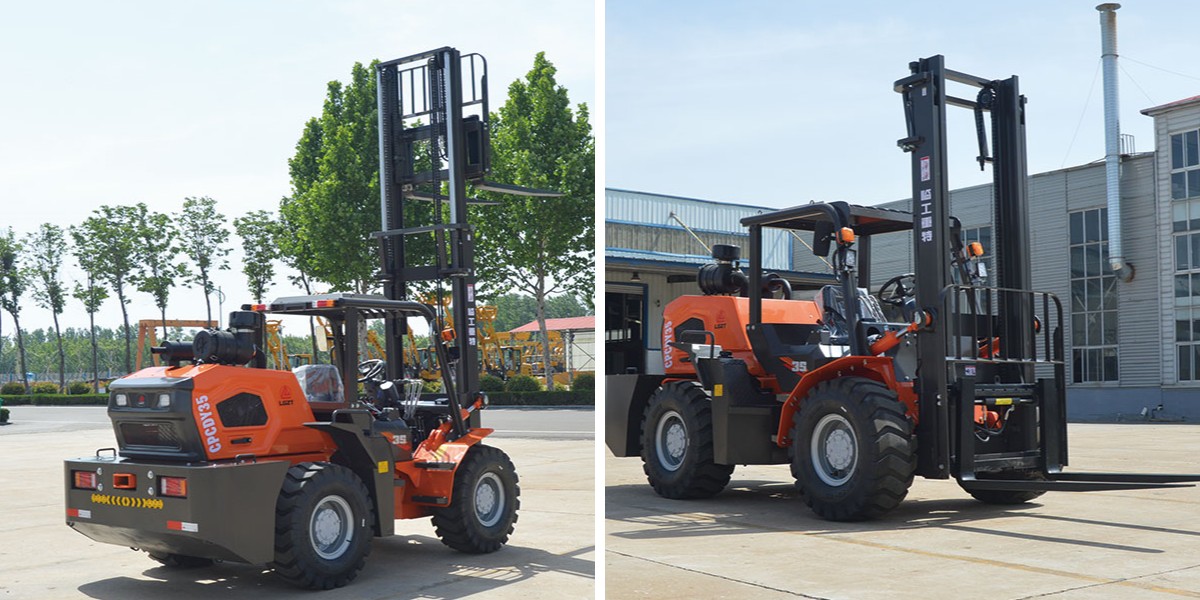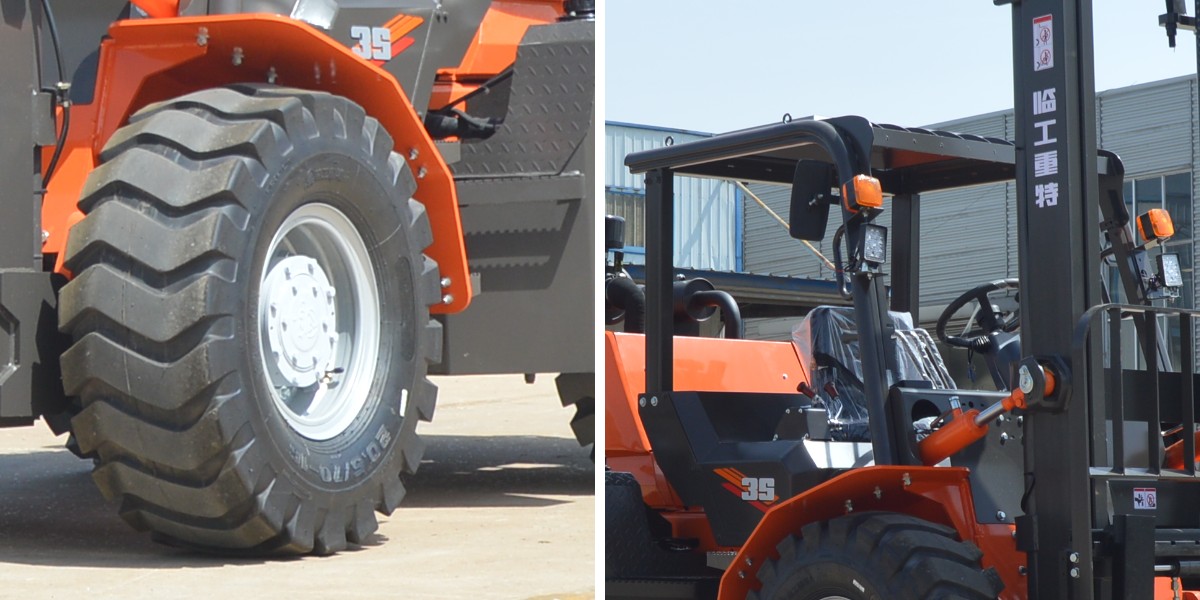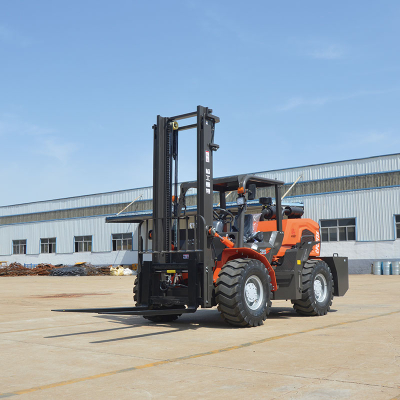Rough Terrain Forklift
Excellent site adaptability
High passability design
All-weather operation capability
Strong attachment compatibility
LGZT Rough Terrain Forklift: An outstanding choice for complex working conditions
In the modern industrial and logistics fields, forklifts are an extremely important material handling equipment. Ordinary forklifts can efficiently complete various handling tasks on flat and well-organized indoor grounds. However, when confronted with complex and changeable outdoor working conditions, their limitations gradually become apparent. As a special type of forklift specifically designed to handle complex working conditions, Rough Terrain Forklift have a series of core advantages over ordinary forklifts and are particularly suitable for the operation requirements under complex working conditions.
1. Excellent site adaptability
1. Complex terrain passability
In many industrial and engineering fields, work sites are often not all flat paved roads. Like a construction site, there is unleveled land and scattered sand and stones everywhere. In the mining area, the ground is rough and uneven, with a large number of stones and potholes. At the forest logging site, there are muddy paths and undulating terrain. In oilfield operation areas, there may also be complex terrains such as sandy land and snow. In these scenarios, ordinary forklifts find it difficult to operate normally due to the limitations of their drive systems and tires.
The off-road forklift is equipped with an all-wheel drive system, which means that all four of its wheels can obtain power output. During driving, the all-wheel drive system can automatically distribute torque based on the adhesion of different wheels, enabling each wheel to fully exert its driving force, thereby significantly enhancing the vehicle's passability on complex terrains.
2. High passability design
In complex work sites, there are often various obstacles on the road surface, such as stones and gullies. Due to the small ground clearance of ordinary forklifts, the chassis is prone to scraping during operation. This not only damages the chassis of the forklift but may also affect the normal operation of the vehicle and even lead to vehicle malfunctions.
To further enhance the off-road capability, the body design of Rough Terrain Forklift has also become more reasonable. Its body lines are smooth, and the designs of the front and rear of the vehicle are more compact, reducing the resistance when the vehicle passes through narrow Spaces or crosses obstacles. This high passability design enables Rough Terrain Forklift to freely navigate through complex terrains, enhancing the flexibility and efficiency of operations.
3. All-weather operation capability
In the actual operation process, adverse weather conditions are inevitable. Rainy and snowy weather can make the road surface slippery, and the muddy ground will also increase the difficulty for vehicles to travel. In this situation, the driving safety of ordinary forklifts will be greatly affected, and they are prone to skidding, side skidding and other phenomena, and may even lead to accidents.
The off-road forklift has been specially designed for harsh weather conditions, equipped with anti-slip differential devices and reinforced suspension systems. The anti-slip differential device can automatically limit the rotational speed of the slipping wheels when they slip, and transfer power to the wheels with better adhesion, thereby ensuring the driving stability of the vehicle. When driving in rainy or snowy weather, if a certain wheel starts to slip, the anti-slip differential device will respond promptly, reducing the torque output of that wheel while increasing the torque of other wheels, enabling the vehicle to continue driving stably.
Second, multi-functional job scalability
1. Strong attachment compatibility
In different operation scenarios, the tasks to be completed are diverse, such as handling, loading and unloading, hoisting, excavation, etc. Ordinary forklifts are usually only equipped with a single fork and can only complete simple cargo handling tasks, unable to meet the diversified operation requirements.
Rough Terrain Forklift have strong attachment compatibility and can quickly replace various attachments such as forks, buckets, booms, and clamps. This enables Rough Terrain Forklift to flexibly adjust their functions according to different operation tasks. When it is necessary to handle ordinary goods, forks can be installed. For example, in the container turnover operation at the port, using forks can quickly move containers from one place to another. When encountering work that requires excavation, such as site leveling at a construction site, the bucket can be replaced for excavation operations. When hoisting some large equipment, installing the boom can complete the hoisting task. For some goods with special shapes, such as round pipes or bundled wood, using clamps can make transportation more convenient.
The attachment replacement operation of Rough Terrain Forklift is simple and fast. Generally speaking, through dedicated connection devices and hydraulic systems, drivers can complete the replacement of attachments in a short time, which greatly improves the operation efficiency. This multi-functional operational scalability makes the off-road forklift a "universal" operational device, capable of adapting to various different operational scenarios.
Heavy cargo handling capacity
In some industrial fields, such as mining and large outdoor storage yards, it is often necessary to handle irregular or extra-wide heavy goods. Due to the limited design strength of the frame and mast of ordinary forklifts, they are prone to stability issues when carrying heavy goods, especially irregular or overly wide ones, and even pose a risk of overturning.
The frame and mast of the off-road forklift have undergone reinforced design. The frame is made of high-strength steel, with a more solid structure that can withstand greater weight and impact force. When carrying heavy goods, the frame can evenly distribute the weight of the goods to each wheel, ensuring the smooth operation of the vehicle. The design of the mast is also more reasonable, featuring higher strength and stability. It can maintain the balance of heavy goods when lifting them, preventing them from shaking or tilting.
Iii. High Productivity performance
1. High-power power system
In some operation scenarios, such as heavy-load climbing and long-distance transportation, forklifts need to have strong power output. The power system of a common forklift has relatively low power. When climbing a slope under heavy load, it often feels powerless, travels slowly, and may even fail to climb the slope smoothly. During long-distance transportation, due to insufficient power, the operation time will also be prolonged, affecting the overall efficiency.
The off-road forklift is equipped with a high-power diesel engine. Diesel engines are characterized by high torque and strong power, which can provide sufficient power output for forklifts. When climbing a slope under heavy load, a high-power diesel engine can output sufficient torque, enabling the forklift to easily climb the steep slope. For instance, in mining operations, forklifts need to transport ores from lower places to higher ones. Heavy-load climbing slopes is a common operation situation. The high-power engines of Rough Terrain Forklift can ensure that the vehicles can smoothly climb slopes when fully loaded, significantly reducing the operation time.
In terms of long-distance transportation, a high-power power system can enable forklifts to maintain a relatively high traveling speed. Compared with ordinary forklifts, Rough Terrain Forklift can travel a longer distance within the same period of time, thereby improving the efficiency of material transfer. This high-power power system enables Rough Terrain Forklift to perform well in heavy-load and long-distance transportation operations, significantly enhancing overall operational efficiency.
2. High-speed maneuverability
In some large-scale operation sites, such as docks and mining areas, forklifts are needed to be able to transfer materials quickly. The traveling speed of ordinary forklifts is relatively slow and cannot meet the demand for rapid transfer.
Rough Terrain Forklift have a significantly higher traveling speed than ordinary forklifts. Its power system and transmission system have been optimized in design, enabling the vehicle to achieve a relatively high speed during driving. In dock operations, a large amount of goods need to be transferred from ships to warehouses or other transportation vehicles within a short period of time. The high-speed maneuverability of Rough Terrain Forklift enables them to quickly move between various areas of the dock and complete the goods transfer tasks in a timely manner. In mining areas, there is often a certain distance from the mining site to the processing area or the parking area of transport vehicles. The high-speed driving capacity of Rough Terrain Forklift can significantly shorten the transportation time of materials and improve the production efficiency of the mining area.
3. Continuous operation reliability
In some high-intensity working conditions, such as continuous construction at construction sites and uninterrupted mining in mines, forklifts need to operate continuously for long periods of time. Due to deficiencies in heat dissipation and durability, ordinary forklifts are prone to malfunctions during long-term operation, leading to shutdowns for maintenance and affecting the operation progress.
The off-road forklift has been optimized for high-intensity working conditions and performs well in terms of heat dissipation and durability. It is equipped with an efficient heat dissipation system, which can promptly dissipate the heat generated by the engine and hydraulic system, ensuring that the equipment can operate normally even in high-temperature environments. When operating continuously for a long time, the engine and hydraulic system generate a large amount of heat. If the heat is not dissipated in time, it will cause the equipment temperature to be too high, affecting its performance and service life. The heat dissipation system of the off-road forklift improves the heat dissipation efficiency by increasing the area of the radiator and optimizing the heat dissipation air duct, ensuring that the equipment can operate at a stable temperature.


